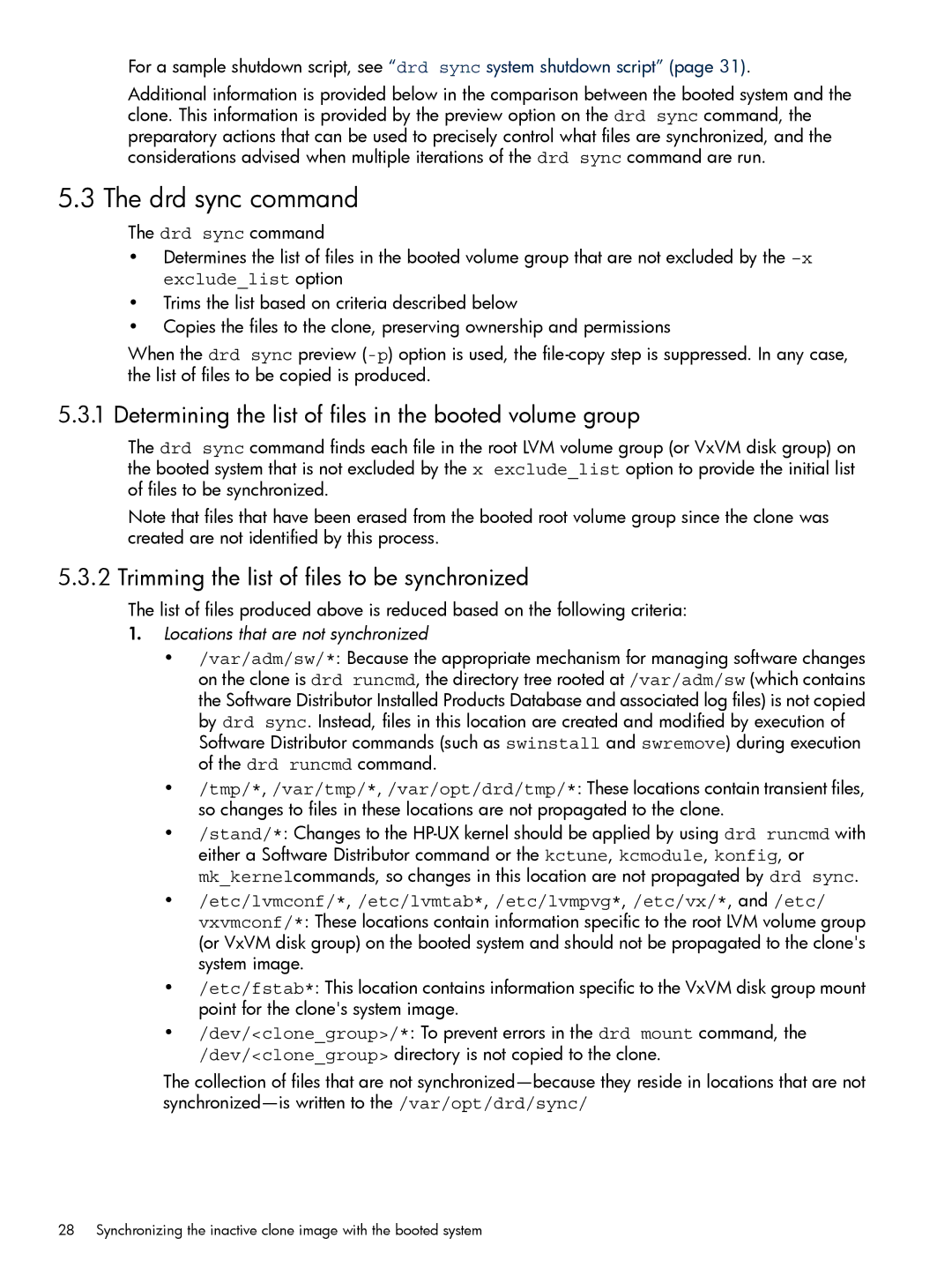For a sample shutdown script, see “drd sync system shutdown script” (page 31).
Additional information is provided below in the comparison between the booted system and the clone. This information is provided by the preview option on the drd sync command, the preparatory actions that can be used to precisely control what files are synchronized, and the considerations advised when multiple iterations of the drd sync command are run.
5.3 The drd sync command
The drd sync command
•Determines the list of files in the booted volume group that are not excluded by the
•Trims the list based on criteria described below
•Copies the files to the clone, preserving ownership and permissions
When the drd sync preview
5.3.1 Determining the list of files in the booted volume group
The drd sync command finds each file in the root LVM volume group (or VxVM disk group) on the booted system that is not excluded by the x exclude_list option to provide the initial list of files to be synchronized.
Note that files that have been erased from the booted root volume group since the clone was created are not identified by this process.
5.3.2 Trimming the list of files to be synchronized
The list of files produced above is reduced based on the following criteria:
1.Locations that are not synchronized
•/var/adm/sw/*: Because the appropriate mechanism for managing software changes on the clone is drd runcmd, the directory tree rooted at /var/adm/sw (which contains the Software Distributor Installed Products Database and associated log files) is not copied by drd sync. Instead, files in this location are created and modified by execution of Software Distributor commands (such as swinstall and swremove) during execution of the drd runcmd command.
•/tmp/*, /var/tmp/*, /var/opt/drd/tmp/*: These locations contain transient files, so changes to files in these locations are not propagated to the clone.
•/stand/*: Changes to the
•/etc/lvmconf/*, /etc/lvmtab*, /etc/lvmpvg*, /etc/vx/*, and /etc/ vxvmconf/*: These locations contain information specific to the root LVM volume group (or VxVM disk group) on the booted system and should not be propagated to the clone's system image.
•/etc/fstab*: This location contains information specific to the VxVM disk group mount point for the clone's system image.
•/dev/<clone_group>/*: To prevent errors in the drd mount command, the /dev/<clone_group> directory is not copied to the clone.
The collection of files that are not
28 Synchronizing the inactive clone image with the booted system
